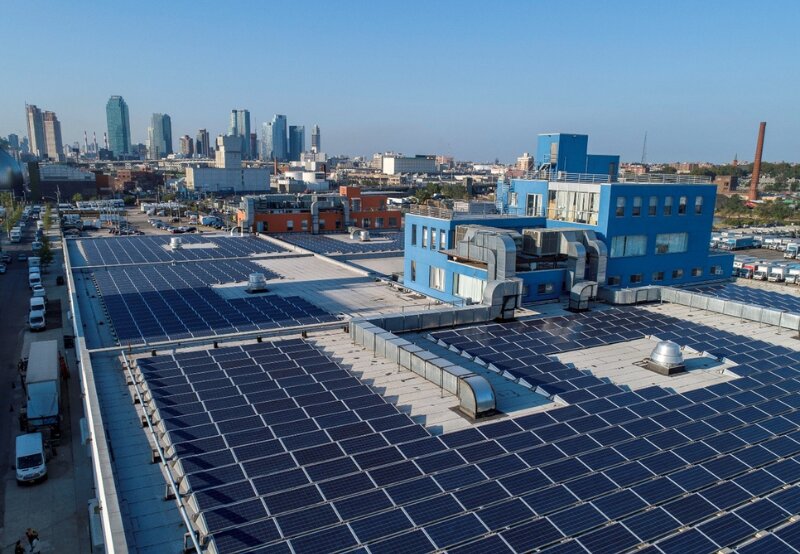As the world shifts towards sustainable energy, rooftop solar energy solutions have become an increasingly popular choice for homeowners. Harnessing the power of the sun to generate electricity can significantly reduce energy bills and decrease your carbon footprint. If you’re considering installing a rooftop solar system, this guide will walk you through the steps to get started and introduce Finray Solar as the best website to meet all your solar needs.
1. Understand the Benefits of Rooftop Solar Energy
Financial Savings
One of the most compelling reasons to invest in rooftop solar energy is the potential for substantial financial savings. By generating your own electricity, you can significantly reduce or even eliminate your monthly utility bills. Over time, the savings on energy costs can offset the initial investment in your solar system.
Long-Term ROI:
- Most rooftop solar systems pay for themselves within 5-10 years, depending on local energy costs and available incentives.
- After the payback period, your solar energy is essentially free, providing ongoing savings for decades.
Environmental Impact
Switching to solar energy reduces your reliance on fossil fuels, thereby lowering your carbon footprint. Solar power is a clean, renewable energy source that doesn’t produce harmful emissions.
Environmental Benefits:
- Reduces greenhouse gas emissions.
- Decreases air and water pollution associated with conventional energy sources.
- Promotes energy independence and sustainability.
Increased Property Value
Homes equipped with solar panels often see an increase in property value. Prospective buyers are attracted to the idea of reduced energy costs and a smaller environmental impact.
Market Appeal:
- Studies show that homes with solar panels sell faster and at a higher price compared to those without.
- Solar installations are viewed as modern, energy-efficient upgrades that enhance a property’s overall value.
2. Evaluate Your Home’s Solar Potential
Assess Your Roof’s Suitability
Before installing a rooftop solar system, it’s essential to determine if your roof is suitable for solar panels. Consider the following factors:
Roof Orientation and Tilt:
- South-facing roofs receive the most sunlight throughout the day, making them ideal for solar panels.
- Roofs with a tilt angle between 15° and 40° are optimal for capturing sunlight year-round.
Roof Condition:
- Ensure your roof is in good condition before installation. If your roof needs repairs or replacement, address these issues before adding solar panels.
- Different roof materials may require specific mounting systems, so it’s essential to choose the right installation method.
Check for Shading
Shading from trees, buildings, or other obstructions can significantly reduce the efficiency of your solar panels. Conduct a shading analysis to determine the best placement for your panels.
Tips for Minimizing Shading:
- Trim back trees and vegetation that may cast shadows on your roof.
- Use microinverters or power optimizers, which allow individual panels to operate independently, reducing the impact of shading.
Finray Solar provides expert site assessments to evaluate your roof’s solar potential and recommend the best solutions for maximizing energy production.
3. Choose the Right Solar System
Types of Solar Panels
Selecting the right type of solar panels is crucial to the performance and efficiency of your solar system. The three main types of solar panels are:
Monocrystalline Panels:
- High Efficiency: Typically the most efficient, ideal for homes with limited roof space.
- Sleek Appearance: Uniform color and design, making them visually appealing.
Polycrystalline Panels:
- Cost-Effective: Generally less expensive than monocrystalline panels.
- Good Performance: Slightly lower efficiency but still a reliable choice for residential installations.
Thin-Film Panels:
- Lightweight and Flexible: Suitable for unconventional roof shapes or portable installations.
- Lower Efficiency: Requires more space to generate the same amount of power as crystalline panels.
Finray Solar offers a wide selection of high-quality solar panels, ensuring you find the best option for your home.
Inverter Selection
The inverter is a critical component that converts the direct current (DC) generated by your solar panels into alternating current (AC) used by household appliances. The three main types of inverters are:
String Inverters:
- Cost-Effective: Common and affordable choice for residential systems.
- Centralized Design: One inverter handles the output of multiple panels.
Microinverters:
- Optimized Performance: Each panel operates independently, improving overall system efficiency.
- Ideal for Shaded Areas: Reduces the impact of shading or panel malfunction.
Power Optimizers:
- Hybrid Solution: Combines the benefits of string inverters and microinverters.
- Enhanced Efficiency: Optimizes the output of individual panels before sending the power to a central inverter.
Finray Solar provides expert guidance to help you choose the best inverter for your system, balancing performance, reliability, and cost.
4. Explore Financial Incentives and Financing Options
Government Incentives
Various government incentives and rebates are available to help offset the cost of installing a rooftop solar system. These incentives include:
Federal Tax Credits:
- In the U.S., the federal Investment Tax Credit (ITC) allows you to deduct a percentage of the cost of your solar system from your federal taxes.
State and Local Rebates:
- Many states and local governments offer additional rebates and incentives to encourage solar adoption.
Net Metering Programs:
- Net metering allows you to sell excess electricity generated by your solar panels back to the grid, earning credits on your utility bill.
Financing Options
If the upfront cost of a solar system is a concern, consider financing options that make solar more accessible.
Solar Loans:
- Loans designed specifically for solar installations, often with favorable terms and interest rates.
Leasing and PPAs:
- Leasing options or power purchase agreements (PPAs) allow you to install solar panels with little to no upfront cost, though you won’t own the system.
Finray Solar can guide you through the available financial incentives and financing options, ensuring you get the best value for your investment.
5. Choose a Reputable Solar Provider
Research and Compare Providers
Selecting a reputable solar provider is crucial to the success of your rooftop solar system. Look for providers with a strong track record, positive customer reviews, and comprehensive warranties.
Considerations:
- Experience: Choose a provider with a proven history of successful installations.
- Customer Support: Ensure they offer ongoing support and maintenance services.
- Warranty: Look for long-term warranties on both the panels and the installation.
Why Choose Finray Solar?
Finray Solar stands out as the best website for all your solar needs. They offer high-quality solar panels, inverters, and accessories, along with expert guidance to help you choose the best system for your home. With competitive pricing, reliable products, and excellent customer service, Finray Solar is your trusted partner in transitioning to renewable energy.
6. Schedule Installation and Maintenance
Professional Installation
Once you’ve selected your solar system, it’s time to schedule the installation. Professional installation ensures that your system is set up correctly and safely.
Installation Steps:
- Site Assessment: A professional will evaluate your roof and design a system tailored to your home.
- Permitting: Your installer will obtain the necessary permits and approvals from local authorities.
- Installation: The panels, inverters, and other components will be installed on your roof and connected to your home’s electrical system.
- Inspection: After installation, your system will be inspected to ensure it meets all safety and performance standards.
Regular Maintenance
Maintaining your solar system is essential to ensure its long-term efficiency and performance. Regular maintenance includes:
Cleaning Panels: Remove dust, debris, and snow to ensure optimal sunlight absorption.
Inspecting Components: Regularly check wiring, inverters, and mounting structures for wear and damage.
Professional Servicing: Schedule periodic inspections with professionals like Finray Solar to identify and address potential issues proactively.
Conclusion
Getting started with rooftop solar energy solutions is a rewarding journey that offers significant financial, environmental, and property value benefits. By assessing your home’s solar potential, choosing the right system, exploring financial incentives, and partnering with a trusted provider like Finray Solar, you can make a seamless transition to clean, renewable energy.







